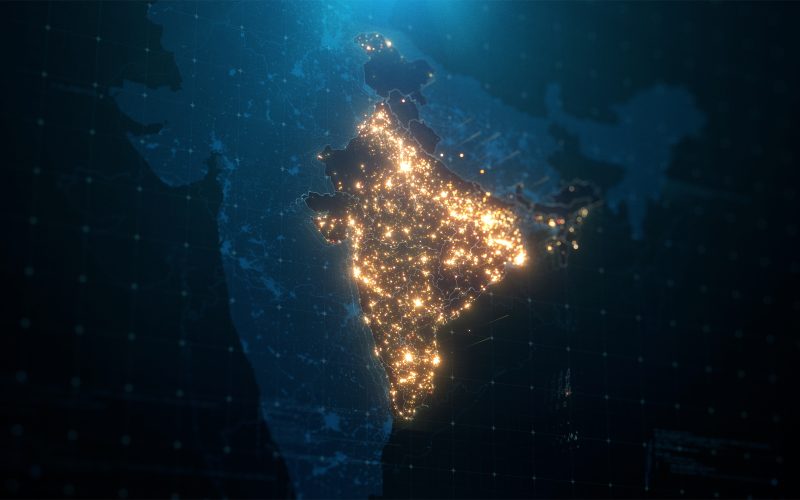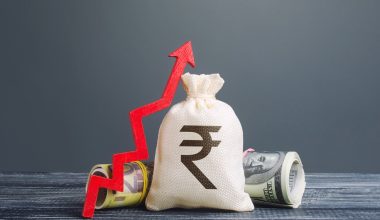The stock market is discounting India’s superior growth story
A topic of hot discussion in global economic forums now is the rise of India as an economic superpower. Ten years ago, India was the tenth largest economy in the world; now India is the fifth largest and is projected to be the third largest behind the US and China by 2027. India’s GDP is likely to double from the present around $ 4 trillion to around $8 trillion by 2032. This is hugely significant and will have profound consequences, particularly for the Indian stock market. Let’s look at the evolution of the post-independent Indian economy focusing on the different growth phases.
The low growth phase: 1950-80
After independence, India adopted an economic growth strategy based on public sector and comprehensive planning, drawing inspiration from the Soviet Union. The growth rate we could achieve in the first three decades following independence, 1950 to 1980, was only 3.5 percent a year. Even though this growth rate was much better than the growth rate during the British period, it was much lower than the growth rates achieved by many other newly independent countries. A notable achievement of this period was the Green Revolution which made India self-sufficient in food grains.
The economic growth strategy based on comprehensive planning, dominance of the public sector and excessive government intervention created a ‘a license-permit Raj’ which stifled private initiative and enterprise. The 1980s witnessed some initiatives to liberalize the economy. Consequently, India’s GDP growth rate improved to 5.6 percent a year in the 1980s.
Economic reforms pushed growth rate higher
In 1991 India faced a major Balance of Payments, which necessitated structural economic reforms. Liberalization, privatization, and globalization became the foundations of economic reforms initiated by the Narasimha Rao government in 1991. All the governments that followed, continued on the path of liberalization, and implemented more market-friendly reforms to push economic growth higher. Economic reforms succeeded in pushing India’s growth to a higher level. If we take the period from 1992- 2024, India has been the second fastest growing large economy in the world, second only to China, with GDP growth rate of above 6 percent. In the liberalization period, India’s GDP multiplied more than 12 times from $300 billion in 1991 to above $3800 billion now. India is now the fifth largest economy in the world after the US, China, Japan, and Germany.
World’s third largest economy: the question is only when
Since India is growing at around 5 percent higher than the growth rates in Japan and Germany, which are the third and fourth largest economies now, it is certain that India will surpass Germany and Japan and become the third largest economy in the world. It is only a question of when. Many global institutions have projected India’s GDP for the next several years. According to the IMF India will surpass Japan and Germany to become the third largest economy in 2027.
Many global investment banks have made projections for India’s GDP for many years to come. One study puts India’s GDP at $8 trillion in 2032 with a per capita income of around $5000. This is a likely scenario. The significance of this potential growth is that the addition to India’s GDP in the next 8 years will be more than the present GDP. This will lead to explosive growth in consumption particularly of consumer durables. Anticipating this, lot of foreign investment, both direct and portfolio, is coming to India. This trend is likely to gather momentum, going forward.
Per capita income is even now very low
Even though India has grown to be the fifth largest economy in the world, our per capita income is even now very low at around $2700. In Purchasing Power Parity India’s per capita income is around $ 9000. We are not yet even a middle-income country. Even though poverty has declined the number of poor people continues to be high.
The challenge is to make growth more inclusive
Now there is a consensus that India has the best growth potential among emerging economies. Already India is the fastest growing large economy in the world and has the potential to retain that position for many years. The challenge is to make this growth more inclusive. A major challenge is to create large number of jobs. India has to invest massively to create world class infra structure. High economic growth rate can generate good tax revenue. Governmental intervention to lift the poor and marginalized through welfare programs also have to be executed on a large scale. Sustained high growth for many years can generate the resources to meet this challenge.
The India Growth Story deserves premium valuations
India is the most expensive stock market in the world now. It can be rightly argued that the stock market is discounting the India Growth Story with premium valuation. So, India’s potential to grow better than other large economies is getting factored-in by the market. But it is important to understand that the market will discount only the immediate future, not the distant future. So, the premium valuations will sustain enabling the market to reach higher and higher levels. But the journey will not be smooth. There will be many bumps on the road triggering corrections. Investors, whose goal is to participate in the long-term wealth creation, should adopt a simple strategy for optimizing returns from investment: remain invested and continue to invest systematically. Remember the famous saying, “ to be successful in the stock market you need only an average person’s intelligence, but ten persons’ patience.”







